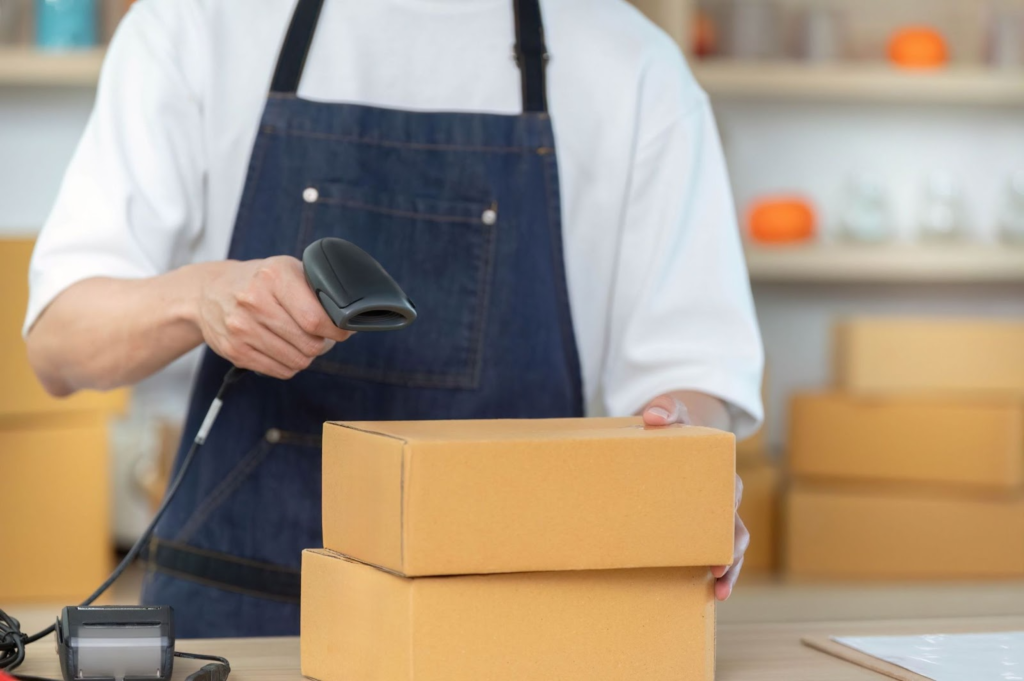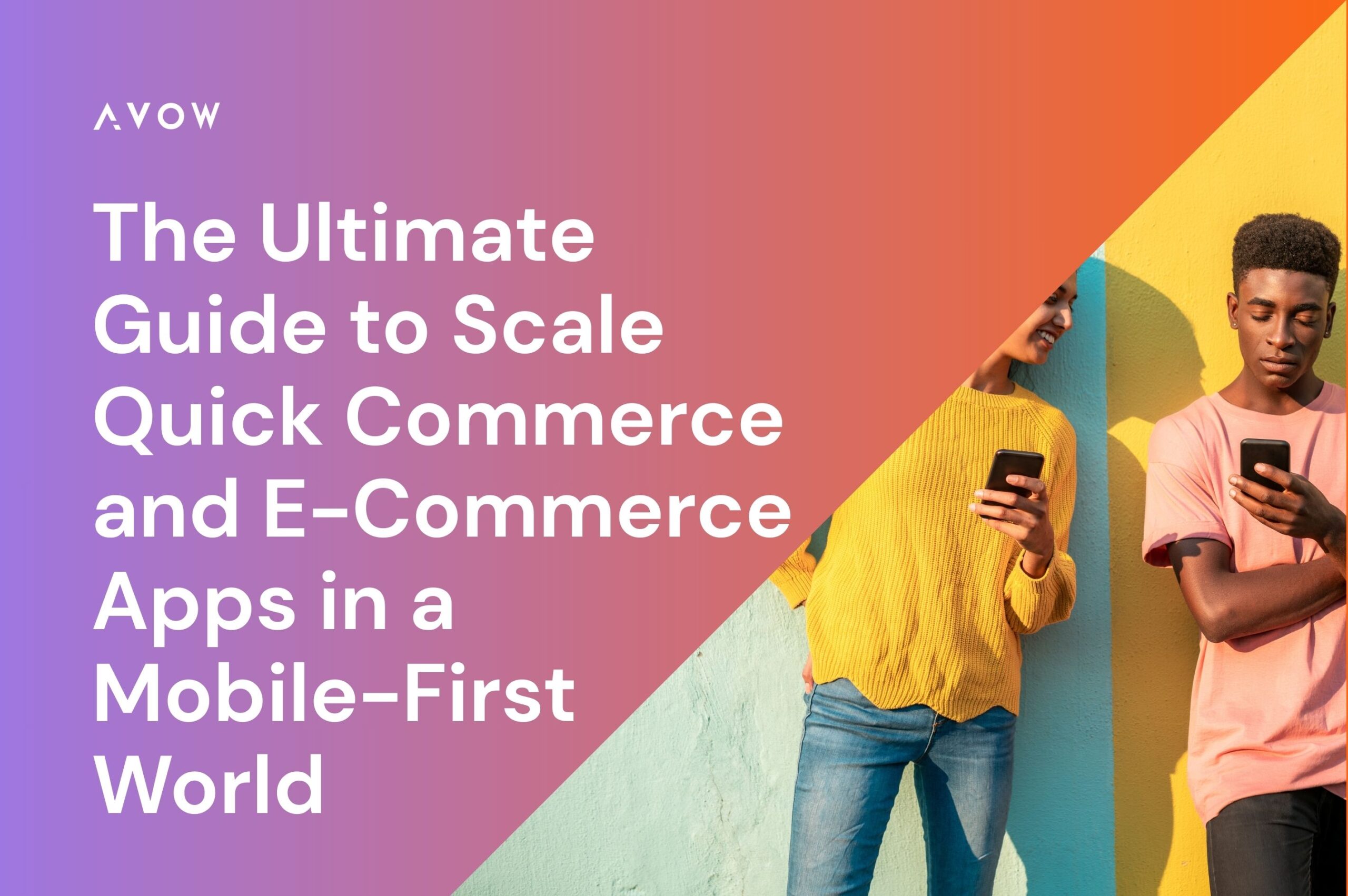
The digital retail landscape is in constant motion, with consumer demands for speed and convenience redefining how businesses operate. In this dynamic environment, a robust mobile presence is no longer a luxury but a necessity for any serious business. The conversation has shifted from simply having a mobile presence to ensuring that this presence is a powerful engine for sales and customer loyalty. For modern brands, mastering the art of scaling quick commerce and e-commerce apps is the key to sustainable growth and long-term profitability.
According to experts, online retail revenue is expected to surpass $6.8 trillion by 2025. Staying ahead of pivotal trends is not just about being relevant—it’s about survival.
This guide will explore the strategies, features, and marketing tactics necessary for e-commerce apps to thrive in this competitive mobile-first world. From understanding the revolutionary quick commerce model to leveraging cutting-edge advertising, we will provide a comprehensive playbook for marketers and developers.
The Rise of Quick Commerce: Reshaping User Expectations
The way people shop has undergone a drastic transformation, moving from leisurely in-store browsing to the instant gratification of online shopping. Today, even traditional e-commerce can feel too slow, as a new force, known as quick commerce or Q-commerce, reshapes the retail landscape with its promise of ultra-fast delivery, often in under an hour.
This model is designed to meet the modern consumer’s demand for immediate gratification, particularly for unplanned, urgent purchases such as groceries and medicines. The revenue in the quick commerce sector is expected to reach $198.06 billion by 2025, a clear sign of its rapid growth and market influence.

Dark stores: The secret behind this speed lies in a sophisticated logistical network of dark stores. These are small, local warehouses not open to the public, strategically positioned in urban areas to ensure drivers have short delivery routes, enabling them to reach customers in minutes. This model rethinks the traditional supply chain by distributing goods across multiple smaller fulfillment centers instead of one large, central warehouse, thereby minimizing the distance for last-mile delivery —the most expensive and time-consuming part of the logistics chain.
What businesses should do to beat competition?
The rise of quick commerce reflects a profound shift in consumer behavior where speed is no longer a luxury but a norm. The success of these platforms hinges on their ability to consistently meet this demand for immediacy and provide a seamless customer experience. For businesses, this means adapting to a shrinking marketing funnel where the time between seeing an ad and making a purchase is drastically reduced, requiring a focus on high-impact, immediate calls to action.
Learn more about “The Rise of Quick Commerce: How Speed is Reshaping User Expectations.”
Key App Features for High-Performing Shopping Apps
A well-built mobile app is a powerful engine for sales, and top e-commerce apps share a standard set of features designed to improve the customer experience and drive conversions.
These features are crucial for any business, whether in the early stages of mobile app development or looking to enhance an existing application. By prioritizing key functionalities, businesses can meet consumer expectations, foster loyalty, and encourage repeat purchases.
Push notifications: They offer a significant advantage of a mobile commerce app, providing a direct line of communication with users that isn’t possible with a mobile website. They have a 90% deliverability rate and an opening rate that is 50% higher than email. By using them to deliver timely updates and exclusive offers, businesses can create a sense of FOMO (fear of missing out) and encourage quick action.
User profile: Allowing users to create a user profile provides valuable insights into customer behavior, enabling businesses to send personalized product recommendations tailored to each individual. This feature also simplifies the shopping experience by saving credit card, billing, and shipping information, allowing for checkouts in seconds.
Loyalty programs: Customers love e-commerce apps that have loyalty programs, as they can get rewards for the business they do with the brand. For customer loyalty programs, a mobile app is the ideal platform, as 75% of consumers are more likely to participate if they can access the program from their smartphones.
In-app customer support: Another essential feature is in-app customer support, as a significant 86% of users are willing to pay more for excellent customer service. Integrating live chat, email, or ticket support directly into the app ensures that customers can get help easily, with 77% of happy customers sharing their positive experiences, which can lead to free referrals.
App analytics: Finally, using app analytics is crucial for making continuous improvements. By tracking data such as conversion rates and user behavior, businesses can identify areas for improvement and ensure the app remains continually optimized.
These are some of the most crucial features that successful e-commerce apps have.
Learn more about “The 12 must-have features for high-performing e-commerce and quick commerce apps.“

How to Scale E-Commerce Apps Using Mobile OEM Advertising
The mobile app landscape is a crowded battlefield where traditional advertising methods often yield diminishing returns. The struggle for visibility is real, forcing marketers to seek a new edge.
This new frontier is mobile OEM Advertising, a channel that bypasses saturated app stores and reaches users at their most receptive moment.
This form of advertising is a partnership between an app developer and a mobile device manufacturer like Samsung, vivo, OPPO, Xiaomi, or Huawei. It goes beyond simple banner ads by leveraging native touchpoints on the device itself, such as preloads, smart folders, and first-boot experiences. These native integrations feel less like a promotion and more like a helpful feature, earning a level of trust that a third-party ad can’t achieve.
One of the key advantages of this channel is high-quality, fraud-free traffic. The direct-from-manufacturer traffic eliminates the risk of ad fraud, such as bot traffic and click farms, which caused a whopping $84 billion in losses in 2023.
This results in every install being a genuine user on a real mobile device, leading to a superior install-to-purchase conversion rate and a higher customer lifetime value (LTV). Additionally,
Mobile OEM advertising offers a superior ROI and lower CPI. While the initial cost may seem high, the unprecedented quality of the traffic and the exceptional LTV of these users mean that the actual cost per install is often far lower than on other channels.
For marketers looking to leverage this channel to scale their e-commerce apps, key strategies include:
Researching OEM partners and working with a specialized partner agency like AVOW, defining campaign goals that focus on quality over quantity, such as “First Purchase” and “Add to Cart”; and implementing accurate measurement and attribution since traditional models won’t work. By closely monitoring post-install event data, you can optimize your campaign and allocate more budget to the most effective placements and partners—the best way to increase installs for your e-commerce apps.
Learn more about “Beyond the App Store: How Mobile OEM Ads are Redefining App Visibility.”

Converting App Installs to Loyal Customers: Proven Retention Strategies
A high customer retention rate is essential for the long-term health of a business, as it is significantly more profitable to retain an existing customer than to acquire a new one. Gaining a new customer can cost between 5 to 25 times more than keeping an existing one, and a slight increase of 5% in retention can raise profits by 25% to 95%. With the likelihood of selling to a current customer ranging from 60% to 70%, building a foundation of loyal customers is crucial for sustainable growth.
To combat the “ghosting” phenomenon, where customers make a one-time purchase and disappear, businesses should recognize and reward loyal customers. You can do this through loyalty programs that offer exclusive pricing, early access to new products, or a points system that customers can redeem for gifts.
Loyalty programs: A great loyalty program can lead to a 74% increase in the likelihood of a customer recommending your company.
Returns and refunds: Another vital strategy is to make delivery, returns, and refunds easy. Being transparent about shipping and returns, utilizing real-time tracking, and providing free and convenient return methods can foster trust and encourage repeat business.
Personalizing the post-purchase experience is also a powerful tool for customer retention. Offering personalized incentives, like a discount for a future purchase, can increase sales and boost loyalty, with a Segment report finding that 62% of companies attribute personalization to an increase in retention.
Referral programs: Businesses can also use a referral program to turn loyal customers into brand advocates. With 82% of Americans seeking recommendations before purchasing a product, leveraging word-of-mouth marketing is a powerful way to acquire new customers and increase retention.
Subscription services: Finally, even for businesses that don’t have a subscription-based model, strategically implementing subscription services for auto-replenishment of consumable products can significantly increase a customer’s lifetime value and improve retention rates to 89% for top performers.
Most successful e-commerce apps follow these and other simple strategies to stay relevant and to retain their customers.
Learn more about “Converting app installs to loyal buyers: 10 retention strategies that work.”
Leveraging Seasonal Advertising for App Growth
In today’s crowded digital landscape, being seen at the right time is just as important as having a great app. It is where seasonal advertising comes in —a strategic approach to mobile app marketing that leverages the predictable ebbs and flows in consumer buying patterns to consistently boost app growth and revenue. For example, online holiday sales in 2024 totaled $1.2 trillion, with $842 billion coming from mobile devices, highlighting the immense opportunity.
Planning is crucial: A successful campaign requires meticulous pre-planning through a marketing calendar. Marketers should map out key seasonal events, holidays, and smaller observances months in advance to maximize their e-commerce app’s reach and capitalize on consumer demand when they are most receptive.

Repurpose content: Instead of spending money to create additional content. Marketers can repurpose and refresh content instead of creating a constant stream from scratch. An Adobe study found that nearly half of small business owners who repurposed content saw an 11-25% increase in engagement rates, saving time and maintaining brand consistency.
Mobile OEM advertising: When it comes to execution, businesses should leverage Mobile OEM Advertising. Many alternative app stores host seasonal campaigns, and advertising on these platforms allows apps to reach the right audience at the right time with minimal effort and significant returns.
Campaign messaging: Marketers should also use urgency and emotional triggers. Limited-time offers and time-sensitive messaging can motivate users to act quickly. At the same time, emotional triggers like nostalgia are particularly effective during the holiday season for building a deeper connection with users.
Analyze: After the campaign, a post-campaign analysis is crucial for evaluating marketing efforts and learning from the experience for future campaigns. This exercise involves reviewing key metrics, such as conversion rates, inventory, and marketing effectiveness, to optimize ad spend for the upcoming year. This holistic approach ensures every seasonal launch becomes an opportunity to refine and strengthen your digital marketing strategy.
Learn more about “How To Leverage Seasonal Advertising To Scale Your App Growth and Revenue.”

2025 E-Commerce and Quick Commerce Trends to Watch
For marketers and developers, staying ahead of major industry shifts is crucial for survival. The year 2025 is shaping up to be a pivotal time, marked by a move toward deeper personalization, greater efficiency, and a renewed focus on sustainability. It is an era of intelligent, integrated, and immersive commerce.
Quick commerce: The ascent of quick commerce is a dominant force, with the Indian Q-commerce market alone projected to reach $7.1 billion by 2025. Its success relies on hyper-local fulfillment centers, also known as dark stores, and its ability to provide instant gratification for a growing demand for urgent purchases.
Social commerce: The power of social commerce is another major trend, with the global market projected to reach $1.2 trillion in 2025. Social media has evolved into a primary sales channel, driven by influencer marketing and seamlessly integrated shopping features, enabling a smooth transition from inspiration to transaction.
Live shopping, a dynamic new trend, combines live streaming with e-commerce to create an immersive and interactive experience. This market is projected to be valued at $1.5 trillion in 2025 and is particularly effective for engaging younger audiences and creating a sense of urgency.
Sustainability: Consumers are also increasingly concerned with the environmental impact of their purchases, making sustainability and transparency a critical trend. A survey found that 80% of consumers are more likely to trust companies that openly share data supporting their sustainability claims. The rise of the digital product passport (DPP), projected to reach a $2 billion market in 2025, is a direct response to this demand for transparency, allowing businesses to showcase a product’s full lifecycle.
AI and Hyper-personalization: Finally, hyper-personalization and AI are no longer “nice-to-have” features but an expectation. Companies that excel at personalization generate 40% more revenue than average players, as AI and machine learning enable everything from real-time product recommendations to predictive analytics that anticipate customer needs.
Learn more about “10 E-Commerce and Quick Commerce Trends To Watch Out for in 2025.“
Conclusion
The future of commerce is undoubtedly fast, intelligent, and customer-centric. For quick commerce and e-commerce apps, success hinges on a blend of cutting-edge features, data-driven marketing, and a deep understanding of evolving consumer behaviors.
By embracing trends such as quick commerce, social commerce, and AI-powered personalization, and leveraging innovative channels like Mobile OEM advertising, businesses can bypass a crowded market and build a sustainable growth engine.
The most successful e-commerce businesses will be those that prioritize speed, enhance user experiences, and foster meaningful customer relationships. In this mobile-first world, the strategic imperative is clear: to not just keep pace with the market but to lead it.
Unlock your e-commerce apps’ growth potential with AVOW Mobile OEM Advertising Services—where your brand connects with millions!

About the Author






